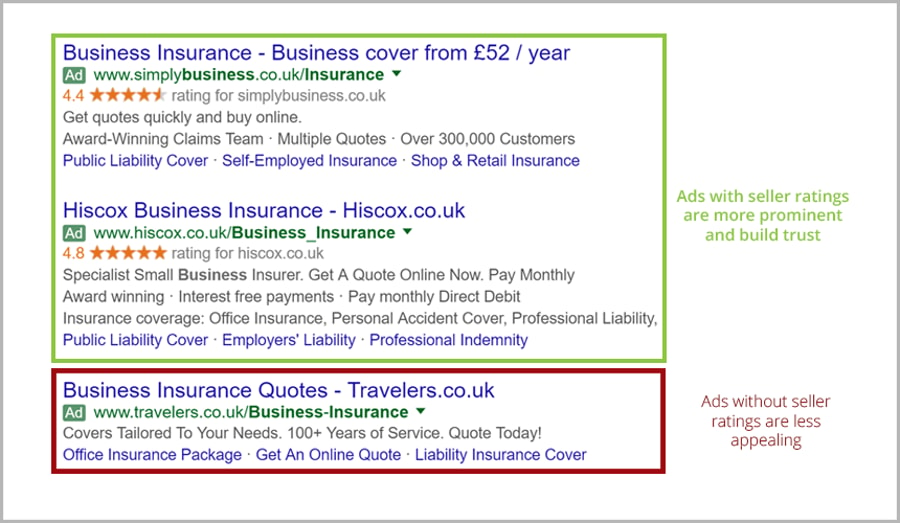It’s tough being the little guy, especially in a marketplace full of big fish with limitless budgets.
So many small businesses make the mistake of shying away from PPC (pay-per-click) advertising as they assume it’s going to be an expensive channel for them. But in reality, PPC is a great channel for small businesses and startups. It’s the perfect way to reach qualified eyeballs, strengthen your brand and discover new customers at a cost you can control.
According to research conducted by the Internet Advertising Bureau, UK digital advertising spend grew to a whopping £8.6 billion in 2015, up 16.4% from 2014. And with 51% allocated to paid search, at a cost of £4.35 billion, it’s evident that the channel is proving an increasingly popular way for marketers to win new business.
Of course, there's every chance your strategy will look very different from the approach of larger businesses. However, in this article, we explore some smart ways that small businesses (the little guys) can use AdWords to successfully compete with the big brands on PPC without a six-figure budget.
Focus your ads: target long-tail keywords over broad terms
It’s inevitable: the bigger the account, the more time and effort it takes to optimise. And generally speaking, big brands will have external agencies managing massive accounts, with thousands of keywords, adverts and landing pages. As a small business, you can take advantage of this by targeting adverts to specific key terms.
Steer away from setting lots of broad terms on your account, as you’re likely to be capturing a lot of traffic that will never convert. Instead, use your search terms report for the higher-level search terms to build out long-tail keywords. These can then be pulled out into separate ad groups so you can create highly targeted adverts around these key terms.
For example, targeting terms like “key man insurance cover business” is likely to rustle up lower volume than the term “business insurance” but it will be cheaper to bid on and more likely to produce a final sale. This will require more time investment initially but it will allow you to pick up highly specific traffic at lower costs.
Bid on high-volume keywords but with strict timeframe limits
Some bidding on high-volume keywords is okay, as it will help you build out your highly targeted campaigns and give you exposure to more search terms. However, due to the volumes involved, it’s easy to spend a quick buck if your budgets aren’t watertight, so this should be done within limits.
Set your ads to show during your business's opening times – or while the phone lines are open – and ensure you’re thorough with the negative keywords you apply to these campaigns. This way, you’re taking some of the core traffic but you’re able to monitor these during your operating hours.
Take advantage of seller ratings
You may have noticed that almost all big brands have star ratings featured alongside their ads. This is an opportunity commonly missed by small businesses and something that can be tremendously beneficial in helping to grow confidence in a brand that a customer would have otherwise not been familiar with. Users can be a bit wary when it comes to providing personal details, so having seller ratings can help customers' trust levels, in turn improving CTR (click-through rate) and site conversion rates.
Google sources reviews from a number of independent review websites, so start reaching out to previous customers and asking them to rate your service. Once you reach 30 unique reviews within a 12-month period that are at least 3.5 stars or higher, your seller ratings should start to appear.
A great way to build confidence in your brand.
Make your offer count
Unlike the big brands, it’s doubtful you’ll attract a high click-through rate because of brand recognition. People are creatures of comfort so if you want to pull people in, it’s worth putting an offer in your ad. Just make sure you have a landing page that follows and delivers on that promise of value.
Prior to creating your adverts, an easy way to ensure your offer will stand up against the competition is to take a look at the various searches you’re going to bid for and see what the competition is adding. This can be done via an incognito window or with various PPC tools.
Disregarding landing pages is a big mistake
It’s easy to undermine an otherwise good PPC campaign by forgetting about the customer journey once someone hits your site. Just because someone’s clicked doesn’t mean they’ll convert. Creating relevant, dedicated landing pages for your campaigns not only improves conversion rates but can also help to improve your Google Quality Score, which in time will reduce overall campaign costs.
So take some time to experiment with landing pages. Capture contact details at the earliest occasion and have a tight, finely tuned process for following them up and connecting quickly with the customer. Try and A/B test different pages on an ongoing basis – you’ll be surprised at what works. There are lots of user-friendly landing page tools out there that won’t break the bank and are great if you don’t have a web developer at your fingertips.
If you have a physical presence, exploit it through local ad placements
Over a third of all mobile searches are ‘location-related searches’, so there's a great opportunity to stand out from the crowd if you’re running a bricks-and-mortar outfit, particularly when your competition is exclusively online.
Google has been making local listings and adverts more noticeable over the past few years but within the next few months we will see the next generation of local search ads roll out. These new ads will appear within Google Maps as well as across Google.com. With the introduction of these new adverts, brand logos and offers will appear directly on the surface of the map rather than alongside.

Google is putting a lot of energy into upscaling local ads
Think mobile first
More than half of the trillions of searches conducted on Google per year are done via a mobile device. It is this statistic that has caused Google to think about what AdWords would look like if they created AdWords in today’s mobile-first world. Consequently, this has led to a few changes to AdWords, with arguably the biggest being that standard text ads will no longer be accepted as of 26 October 2016. The all new Expanded Text Ads will take their place, allowing 2x the current text limits. So if you’re currently managing a PPC account, check out this article covering ten things you need to know about Google Text Expanded Text Ads. You’ll need to update your ads by the cut-off date or you risk missing out on some great visibility.
The PPC pond is definitely a playground for the brave. However there’s never been a better time to contend with the big guys online. By being smart with your budget and spending some time and effort optimising and tweaking your campaigns, you won't only compete against much bigger companies when it comes to PPC. You'll thrive.






These cookies are set by a range of social media services that we have added to the site to enable you to share our content with your friends and networks. They are capable of tracking your browser across other sites and building up a profile of your interests. This may impact the content and messages you see on other websites you visit.
If you do not allow these cookies you may not be able to use or see these sharing tools.